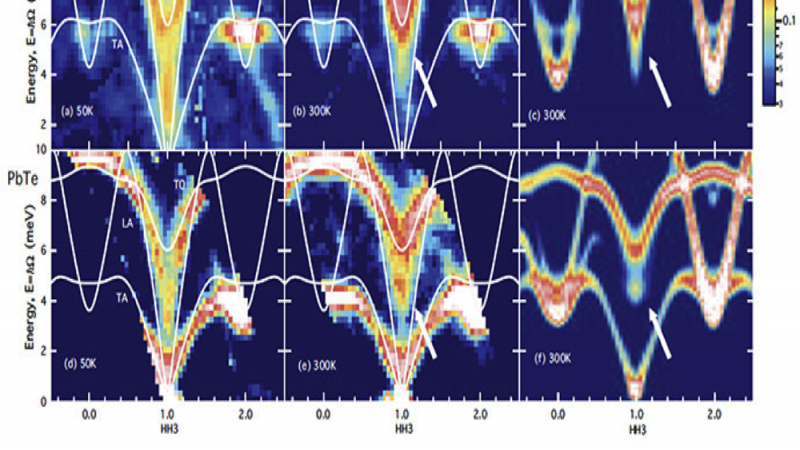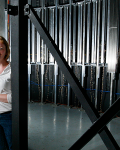Inelastic neutron scattering (INS) of rock-salt thermoelectric compounds SnTe and PbTe show that, surprisingly, although SnTe is closer to the ferroelectric instability, phonon spectra in PbTe exhibit a more anharmonic character. This behavior is reproduced in first-principles calculations (supported by CAMM) of the temperature-dependent phonon self-energy. The simulations reveal how the nesting of phonon dispersions induces prominent features in the self-energy, which account for the measured INS spectra and their temperature dependence. We establish that the phase-space for three-phonon scattering processes, rather than just the proximity to the lattice instability, is the mechanism determining the complex spectrum of the transverse-optical ferroelectric mode.
A comparison was done of the dynamic susceptibility, χ"(Q,E), for SnTe and PbTe, measured with the CNCS at SNS (T=50K and 300K), and computed with SimPhonies at 300K. The simulation included a rigorous description of the anharmonicity in terms of the full wavevector-dependent phonon self-energy. In particular, our simulations were able to reproduce the anomalous splitting of the transverse optic mode at the zone center in the case of PbTe, and revealed the detailed anharmonic mechanism that gives rise to this effect. This first-in-kind calculation paves the way for systematic simulations of the full shape of phonon spectra, instead of the usual Lorentzian or damped-harmonic-oscillator approximations. Results are published in C.W. Li, O. Hellman, J. Ma, A.F. May, H. Cao, X. Chen, A.D. Christianson, G. Ehlers, D.J. Singh, B.C. Sales, and O. Delaire, "Phonon self-energy and origin of anomalous neutron scattering spectra in SnTe and PbTe thermoelectrics", Phys. Rev. Lett., 112, 175501, 2014 [Neutron modeling supported by CAMM].






